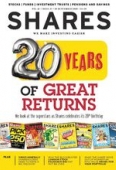Archived article
Please note that tax, investment, pension and ISA rules can change and the information and any views contained in this article may now be inaccurate.
‘How much can I pay into my SIPP?’

I understand the amount you can pay into a pension and qualify for tax relief is limited to £40,000 or your taxable income, whichever is lower.
But what is deemed taxable income? I have no earned income whatsoever but I do receive £14,000 a year in dividends and interest?
If I were to take out a SIPP, what would my contributions be limited to and could I back date any years?
Caroline
Tom Selby, AJ Bell Senior Analyst says:
The SIPP contribution limits are typically described how you describe them. Strictly speaking, however, there are two factors at play here. They are separate from each other, but they are both relevant to the overall picture.
In terms of tax relief limits, personal contributions* are limited to your income. For example, if you had income of £20,000, the most you could pay in is £16,000 and HMRC would top it up with £4,000 tax relief, making £20,000 in total.
But it’s only certain types of income that count. The rule of thumb is that (a) it was earned in some capacity and (b) has been subject to UK tax.
In terms of common forms of income, this realistically limits it to salary, self-employed and partnership income.
Income sources that don’t count include investment income, buy-to-let income, cash-in-hand work, interest on cash deposits and pension income.
If you have no earned income at all you can still save up to £2,880 into a pension, with tax relief topping this up to £3,600.
The £40,000 figure relates to something called the annual allowance, and this is a separate concept to tax relief. If you pay in more than this, you may get a tax charge.
Where it gets complicated is that you can use up any unused annual allowance from the three previous tax years. (Also, some SIPP investors may actually find their annual allowance is reduced if they have accessed their SIPP or if they have income of more than £150,000.)
While you can carry forward annual allowance from previous tax years, it’s important to note that you can’t carry forward earnings.
Therefore, for many SIPP investors it may well be academic that they have several years of annual allowance, because they won’t have the earnings in the current tax year to make a bumper contribution.
On the face of it, your income from dividend and interest doesn’t fall within acceptable forms of income for tax relief purposes. Therefore, the amount you could pay in this tax year would be limited to £2,880.
*Employer contributions are not limited in the same way.
DO YOU HAVE A QUESTION ON RETIREMENT ISSUES?
Send an email to editorial@sharesmagazine.co.uk with the words ‘Retirement question’ in the subject line. We’ll do our best to respond in a future edition of Shares.
Please note, we only provide guidance and we do not provide financial advice. If you’re unsure please consult a suitably qualified financial adviser. We cannot comment on individual investment portfolios.
Important information:
These articles are provided by Shares magazine which is published by AJ Bell Media, a part of AJ Bell. Shares is not written by AJ Bell.
Shares is provided for your general information and use and is not a personal recommendation to invest. It is not intended to be relied upon by you in making or not making any investment decisions. The investments referred to in these articles will not be suitable for all investors. If in doubt please seek appropriate independent financial advice.
Investors acting on the information in these articles do so at their own risk and AJ Bell Media and its staff do not accept liability for losses suffered by investors as a result of their investment decisions.

 magazine
magazine








